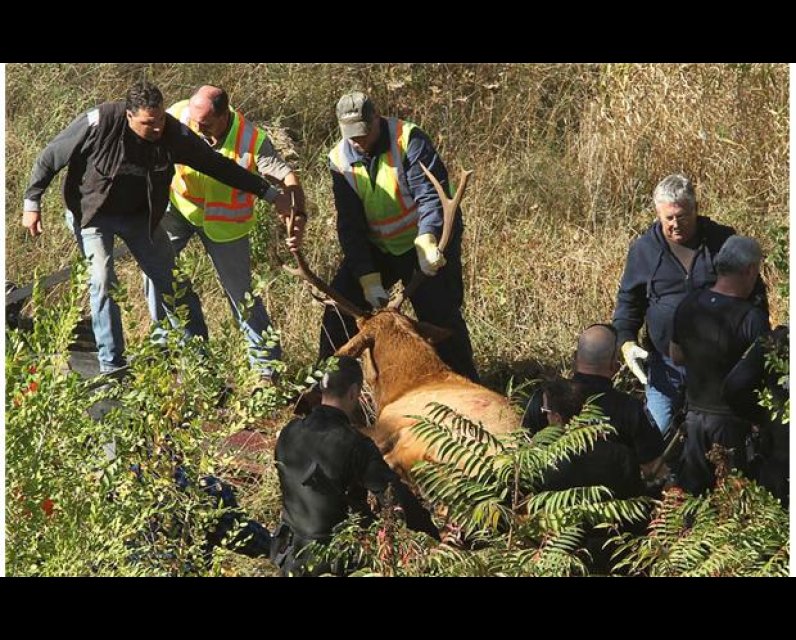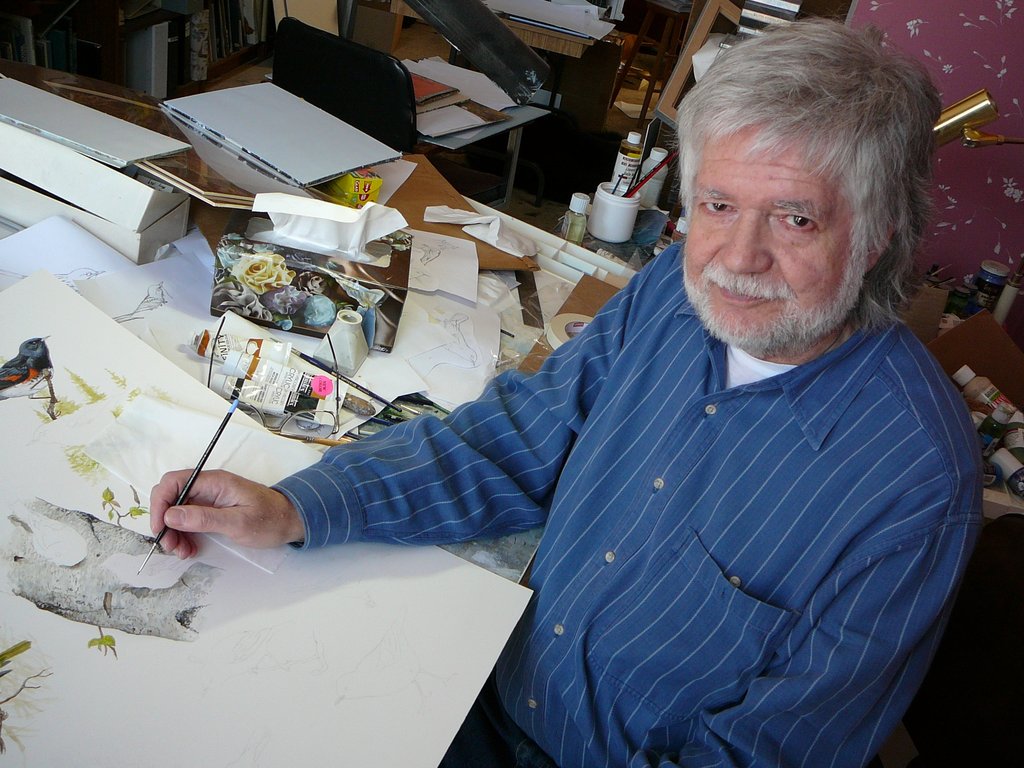Warning message
- Last import of users from Drupal Production environment ran more than 7 days ago. Import users by accessing /admin/config/live-importer/drupal-run
- Last import of nodes from Drupal Production environment ran more than 7 days ago. Import nodes by accessing /admin/config/live-importer/drupal-run
Unpublished Opinions
Barry Kent MacKay is the Canadian representative of Born Free USA, as well as a director of Animal Alliance of Canada, Zoocheck, Species Survival Network, an experienced naturalist, conservationist and animal protectionist, and a bird artist and illustrator, and has written and illustrated for numerous publications.
Ottawa, Canada's capital, where wildlife needlessly die

Earlier this month an elk was found wandering in a woody area in Ottawa, Canada’s capital city. Elks were extirpated from Ontario by about the end of the 19th century. This animal apparently wandered in from a small herd maintained for hunters, a few hundred kilometers away. Although transected by many natural wildlife corridors and containing lots of good habitat, Ottawa is a deadly place for wildlife, a sort of Texas north. It’s as though the dogmatically anti-environmental, anti-wildlife policies of our current and lamented Ottawa-based federal government somehow leeches into municipal policy-making.
The people of Ottawa seem as good and decent as any, and when the elk was seen, there was no concern. According to eye-witness accounts, the big animal was well contained in a safe environment for three hours where it was ideally situated to be tranquilized, if the equipment and properly trained people were available. Sadly the animal started to show stress (do you blame him?) and the police were told by the usual crew of “wildlife managers” to shoot him.
The police are not wildlife experts and should not have to take the blame for Ottawa’s chronically lethal policies. Telling the police there was no choice is part of an overall mindset that, while not representative of the public, is all too representative of the city’s wildlife management policies overall.
On March 24, 1975, in, ironically, Ottawa, the federal government formally declared the beaver, “a symbol of sovereignty”. But Ottawa’s beavers are trapped and killed in large numbers, 150 killed last year by the city alone, plus others in adjoining areas. They don’t have to be. If they cause problems by blocking waterways there are excellent long-term solutions in the form of devices easily maintained that simply prevent the animals from blocking water flow. But the Ottawa mindset for dealing with wildlife that dares to intrude ranges from killing to killing. Their “Wildlife Strategy”, put in force earlier this year, was supposed to change all that, but what Cynthia Jacobson and Daniel Decker have referred to as “the iron triangle” prevailed.
Jacobson, with the Alaska Department of Fish and Game, and Decker, with Cornell University’s Department of Natural resources, wrote, “The relationship between bureaucrats, policy makers and interest groups has been referred to as an iron triangle…because it is thought to be an enduring network of like-minded interests impenetrable by outsiders…the iron triangle relationship between resource management agencies, traditional commodity users, and policy makers”. It prevents outsiders, the majority of tax payers, from the decision and policy-making processes pertaining to wildlife.
And as now retired professor of psychology, Bob Altemeyer, states of such folks: “They are highly submissive to established authority, aggressive in the name of that authority and conventional to the point of insisting everyone should behave as their authorities decide.” (see: http://members.shaw.ca/jeanaltemeyer/drbob/TheAuthoritarians.pdf)
Few people have all those traits, but they do tend to describe too many of the bureaucrats I’ve met in wildlife management fields. The concern was that responses to wildlife issues in Ottawa were within the “iron triangle” of the City’s by-law department, the National Capital Commission (NCC) and the Ontario Ministry of Natural Resources (OMNR). There may be some progressive and compassionate thinkers in all the groups, and maybe even in the Agriculture and Rural Affairs Committee, which “…is responsible for ensuring that the unique interests and requirements of the City’s rural areas are taken into account in the decisions made by the City of Ottawa.” But if they’re there, they are not influential. The NCC reportedly tried to tranquilize the animal, but their failure to do so underscores the need for an effectively trained and equipped response team. The best response is usually to control the people, leave the “intruding” animal alone, and clear a corridor for its departure.
The irony is that the public is increasingly wary of even reporting such animals as deer, bear or other wildlife that, while not dangerous per se, can certainly be a risk to themselves or to property if they wonder into the city, which they inevitably do. Indeed, the City of Ottawa and the NCC should also have been wary of killing this animal because he was one of a few hundred wandering the Bancroft landscape, not too far away, and already suffering the lethal attention of hunters. Under any other circumstances the OMNR would have declared the animal part of an endangered elk population, descended from animals introduced to replace the ones wiped out a century plus ago, and needful of protection. But, being part of the iron triangle dictates pretzel-like arguments about why the few hundred elk somehow benefit greatly by being shot by hunters.
I am so grateful that in Toronto, near where I live, there are more progressive approaches to wildlife-human interactions, including many of those enacted by our very thoughtful, open and transparent Toronto Region Conservation Authority. It’s not perfect, debates and even rancor can occur, but in balance in the Greater Toronto Area don’t automatically reach for the traps and guns in our dealings with wild animals. Maybe it’s our distance from the sadly anti-environment federal government that makes the difference. I don’t live in Ottawa and I don’t know how to drag it into the 21st century, but I hope it happens soon.



Comments
Be the first to comment